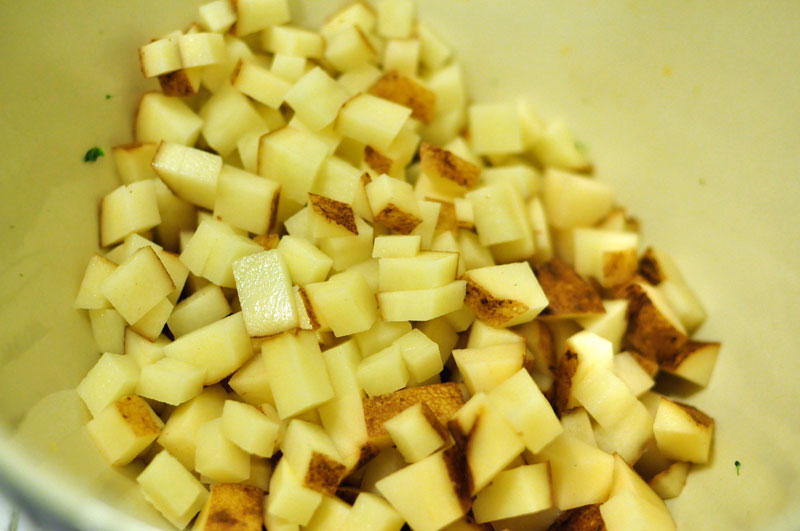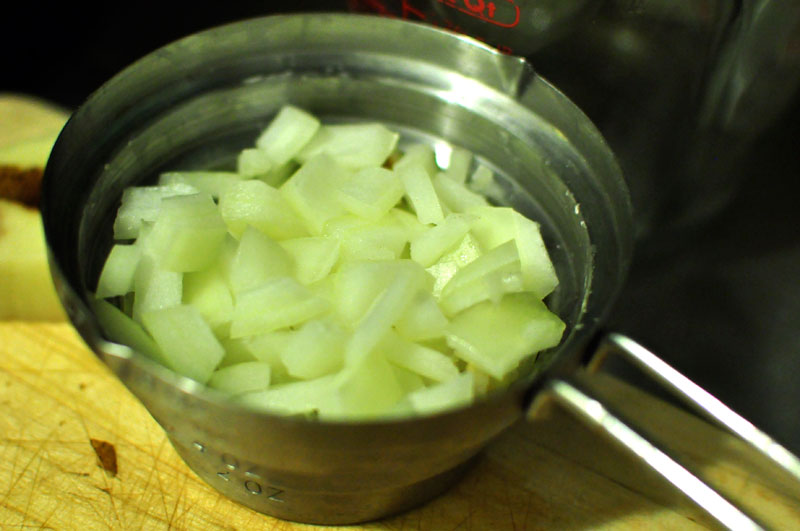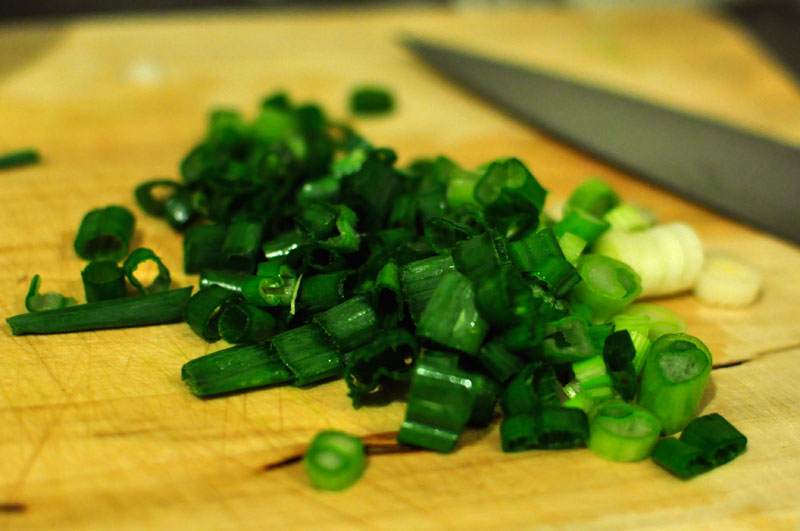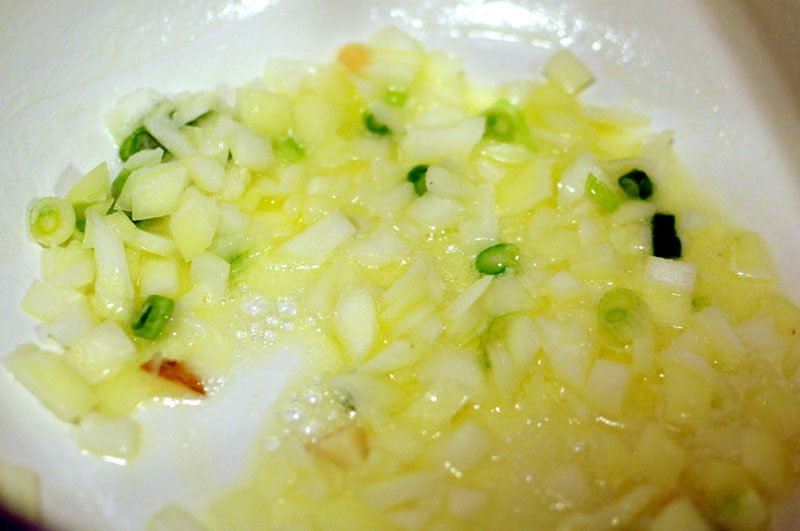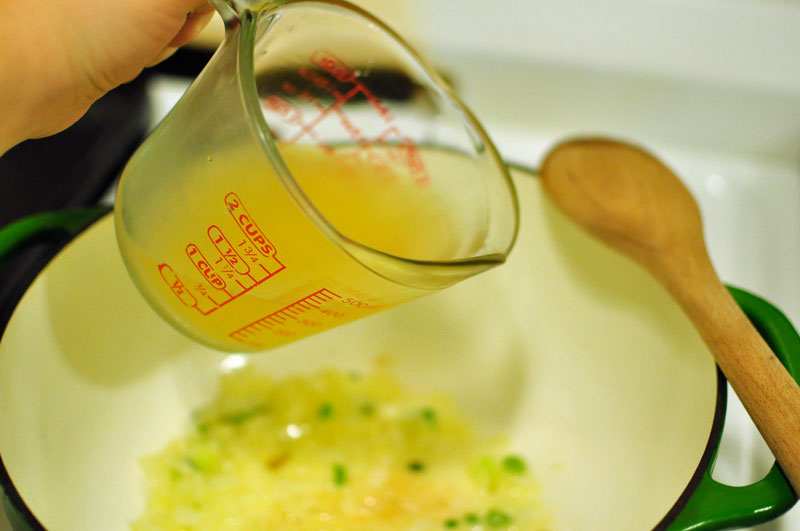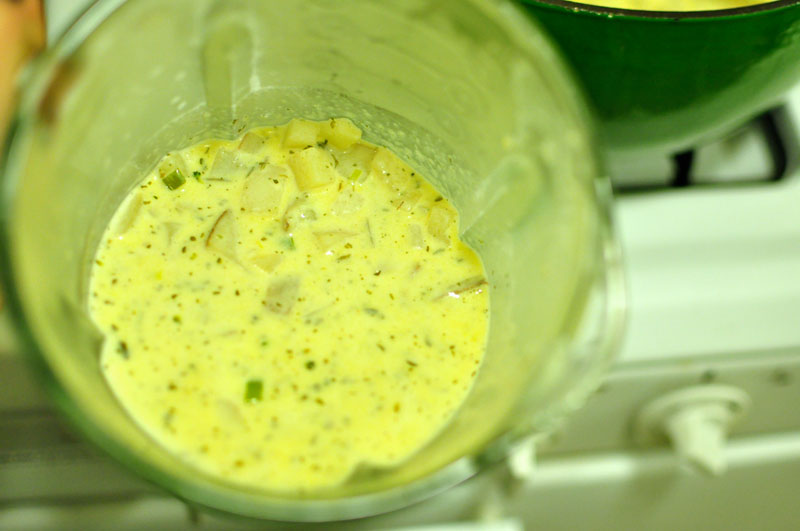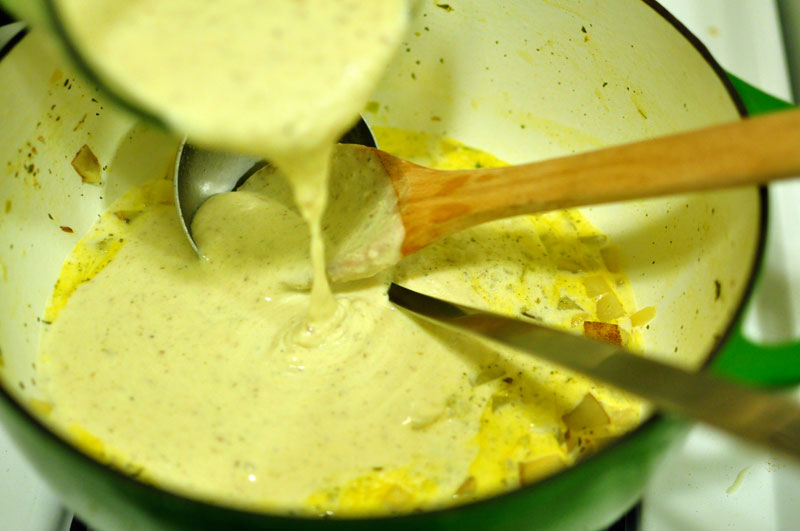We made some spicy chicken recently, with a recipe based on something Jennie found in the Rachel Ray magazine, which of course we tweaked slightly to be GF. All we had to do to make the chicken GF was to start with GF chicken and use my McCormick spices from my kitchen. We use my spices because A) McCormick is lovely and doesn’t put gluten in their single ingredient spices and B) That way, the spices aren’t cross contaminated from happenings in a non-GF kitchen. Flour is wile and gets into all things.
This seems like the time to tell you that I have an extra set of kitchen utensils and some extra spices and oil that live at Jennie’s house and are for my GF use whilst in her kitchen. If there is a kitchen you cook in often that isn’t yours and isn’t GF I highly recommend stocking it with GF materials, so you feel comfortable cooking away from home.
I found the chicken recipe to be surprisingly easy and sort of fun. I’m not the biggest fan of handling raw chicken, but honestly I’m getting used to it and in this recipe you get to use a Ziploc bag, which in my opinion, a sure sign of a great time.
Essentially, all you have to do is to put all of the spices and oil into a large Ziploc bag. Then you add the chicken and smoosh it all together. We used a freezer Ziploc bag for its thicker nature and double zip closure.
 So you add all of your spices and oil to the bag.
So you add all of your spices and oil to the bag.

 Then you add the chicken and squish it all around (the most fun part!) to coat the breasts in the mixture.
Then you add the chicken and squish it all around (the most fun part!) to coat the breasts in the mixture.
 Grease a baking pan and after letting the chicken marinade for 15 minutes (we actually let ours sit for a bit longer because we were multitasking) put it in the pan and let it bake for 35 minutes at 375°.
Grease a baking pan and after letting the chicken marinade for 15 minutes (we actually let ours sit for a bit longer because we were multitasking) put it in the pan and let it bake for 35 minutes at 375°.
 While the chicken was cooking we started the risotto. We used the prepackaged Lundberg butternut squash risotto mix. Lundberg is lovely, most if not all of their rice products are GF, but more on that another time.
While the chicken was cooking we started the risotto. We used the prepackaged Lundberg butternut squash risotto mix. Lundberg is lovely, most if not all of their rice products are GF, but more on that another time.
For the tomatoes we adapted Barefoot Contessa garlic and herb tomato recipe which requires, obviously tomatoes, garlic, and herbs. We used the herbs we had on hand, namely oregano and rosemary, but Barefoot Contessa’s recipe calls for thyme, parsley, basil. It’s up to you; with herbs, you can’t go wrong. We also decided to add an onion because again, nothing is worse off for having onions in it in my opinion. So essentially you just throw all of this on the stove until the tomatoes start to shrivel, about 5-7 minutes.. Easy peasy.

 Since I had Jennie there helping me with this meal all three items finished cooking at the same time, which is basically a miracle when I’m in the kitchen. I’m terrible at timing.
Since I had Jennie there helping me with this meal all three items finished cooking at the same time, which is basically a miracle when I’m in the kitchen. I’m terrible at timing.
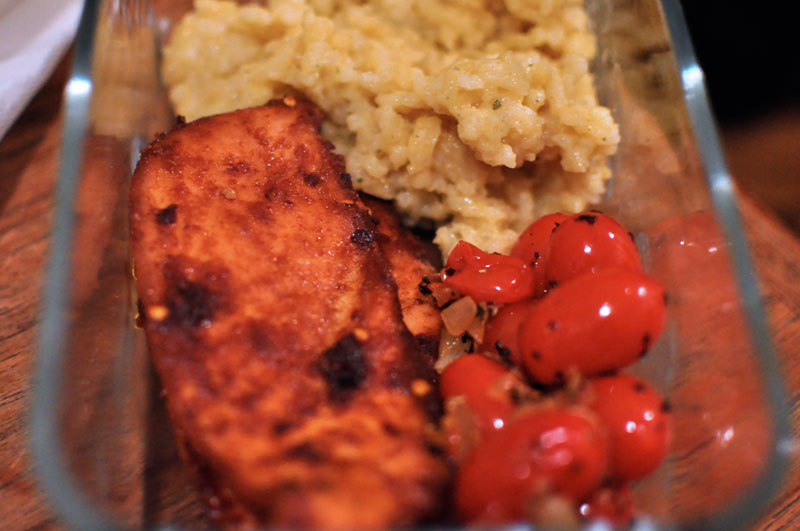 Overall, the chicken turned out to be extremely spicy, both because of the extra marinating and even more so when I ate it as leftovers. The tomatoes, risotto and chicken made an easy and solid meal that was great for leftovers. I consider that a success on all fronts. If you like milder flavor, you can simply switch up the spices you use (less chili powder, more cumin!)
Overall, the chicken turned out to be extremely spicy, both because of the extra marinating and even more so when I ate it as leftovers. The tomatoes, risotto and chicken made an easy and solid meal that was great for leftovers. I consider that a success on all fronts. If you like milder flavor, you can simply switch up the spices you use (less chili powder, more cumin!)
How do you marinade your chicken? Do you have a favorite fallback?


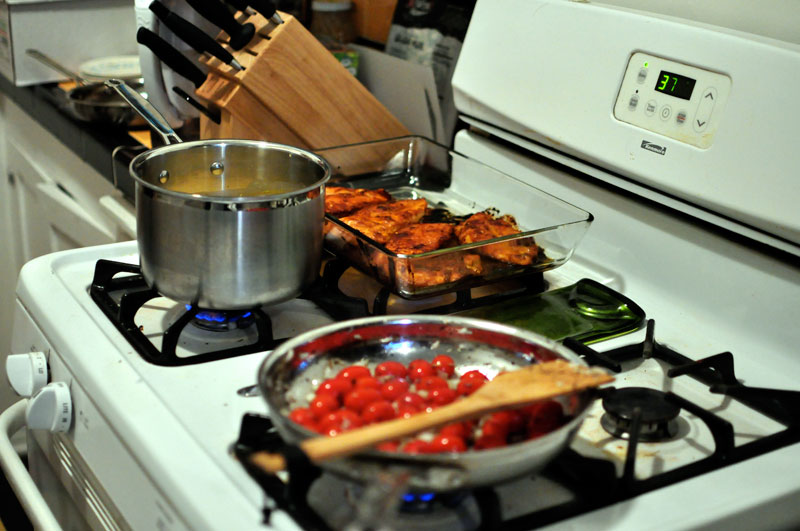


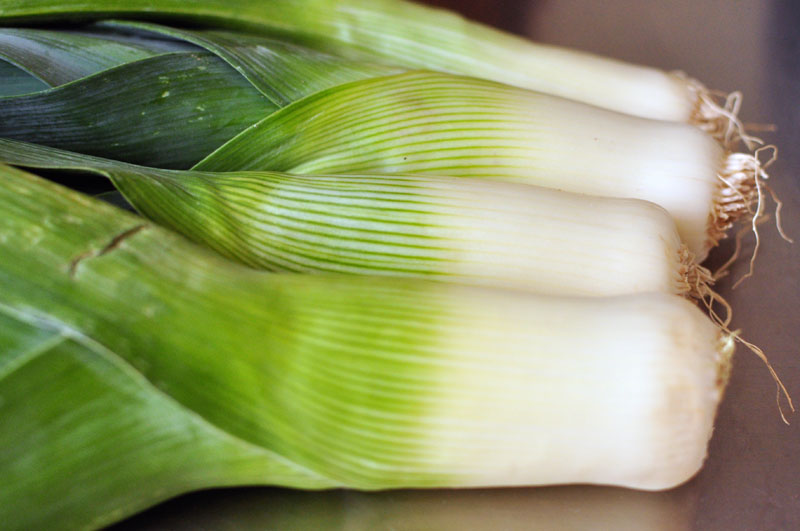
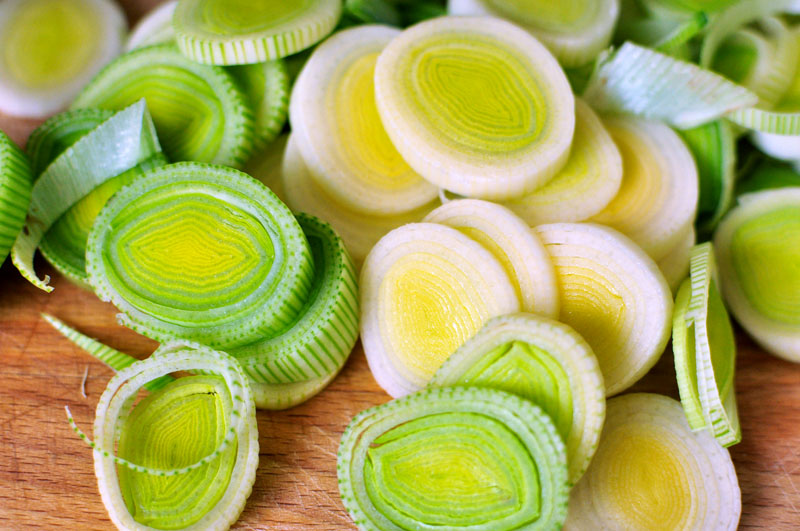
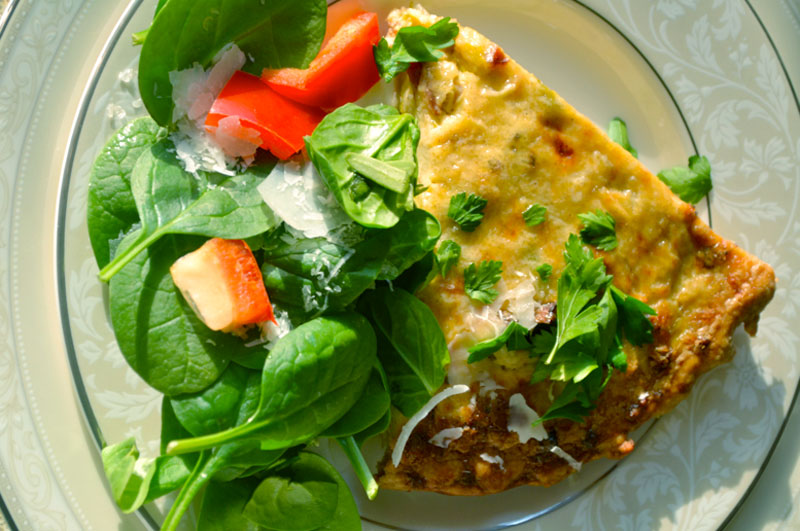

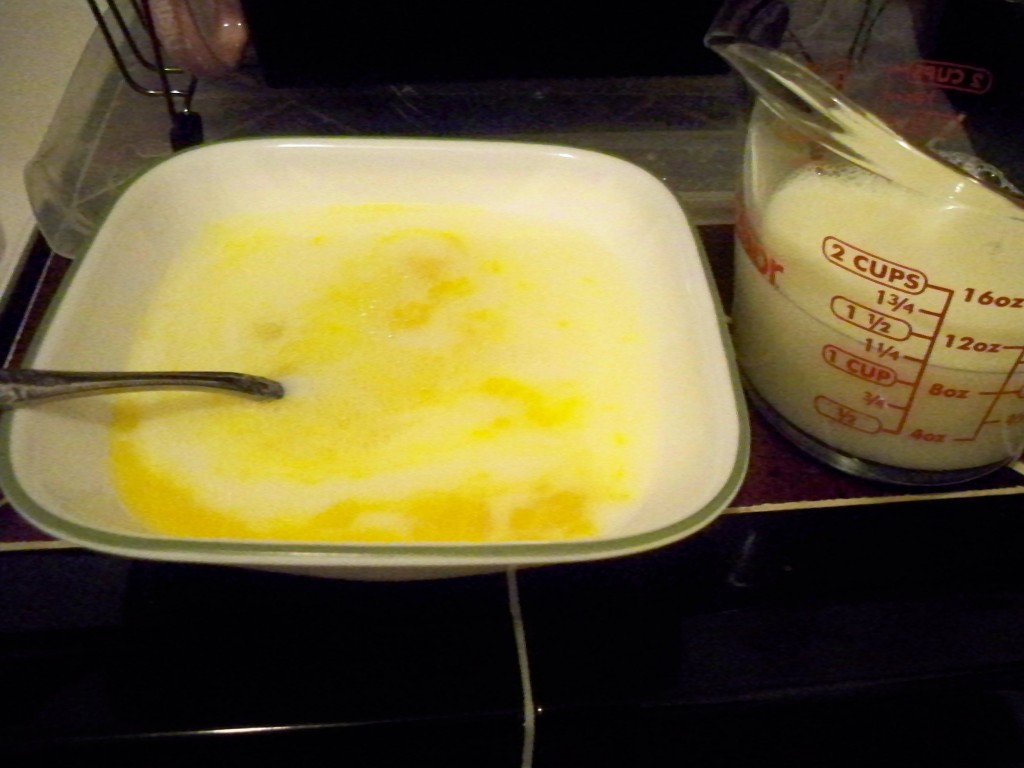
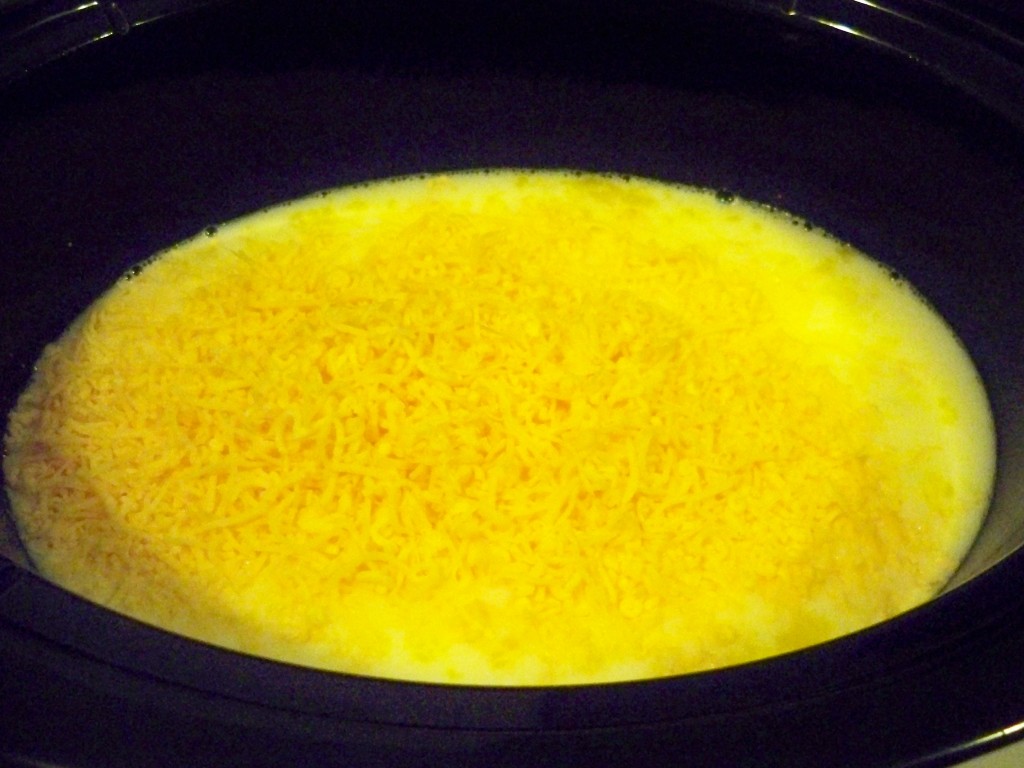
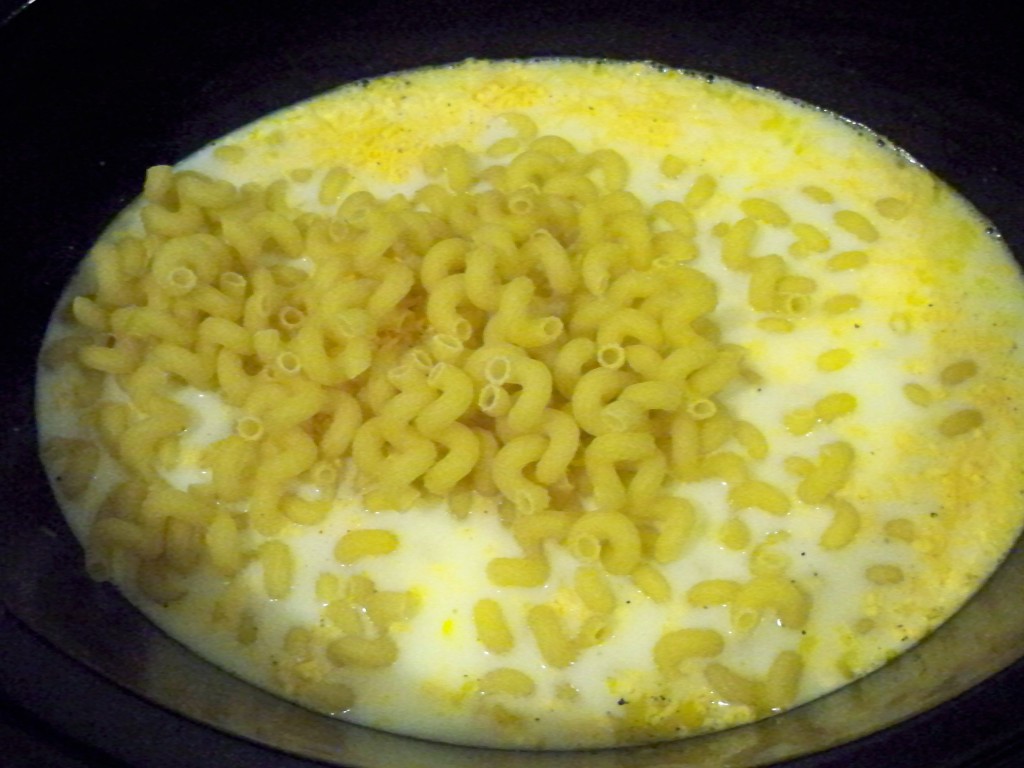
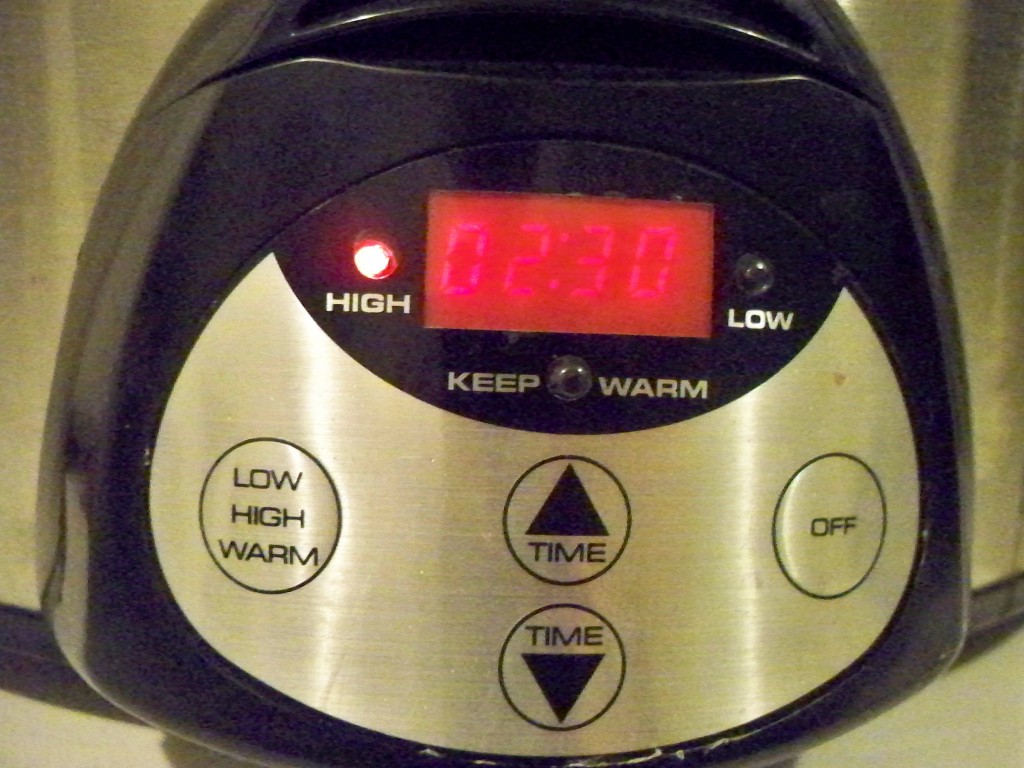
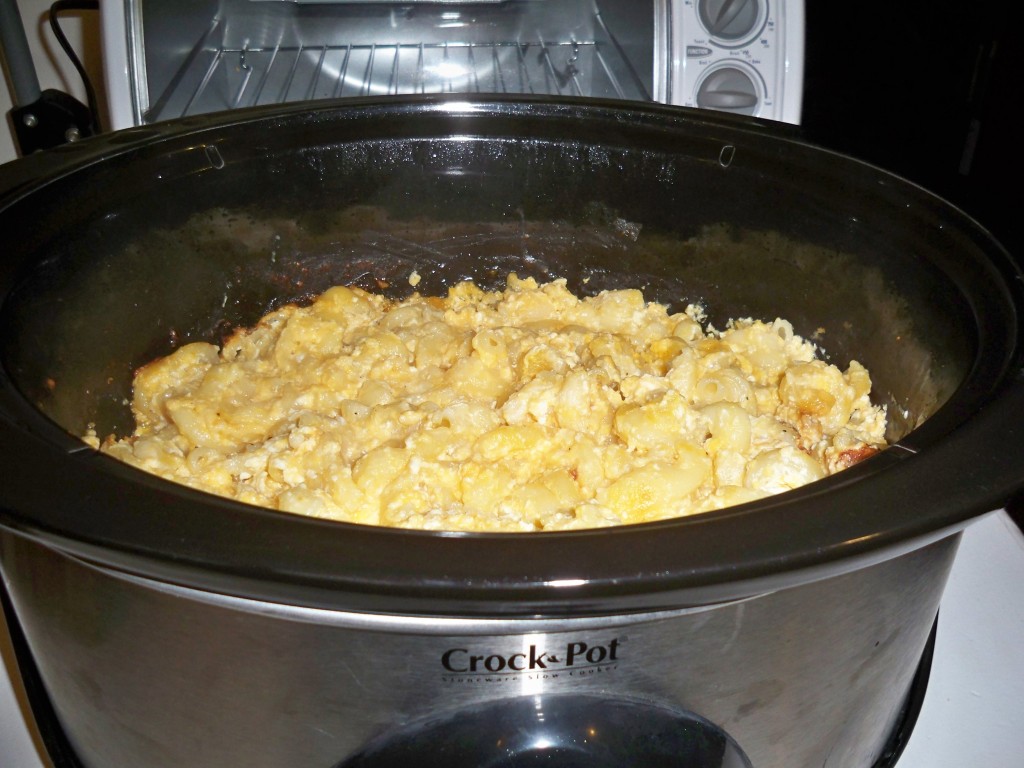
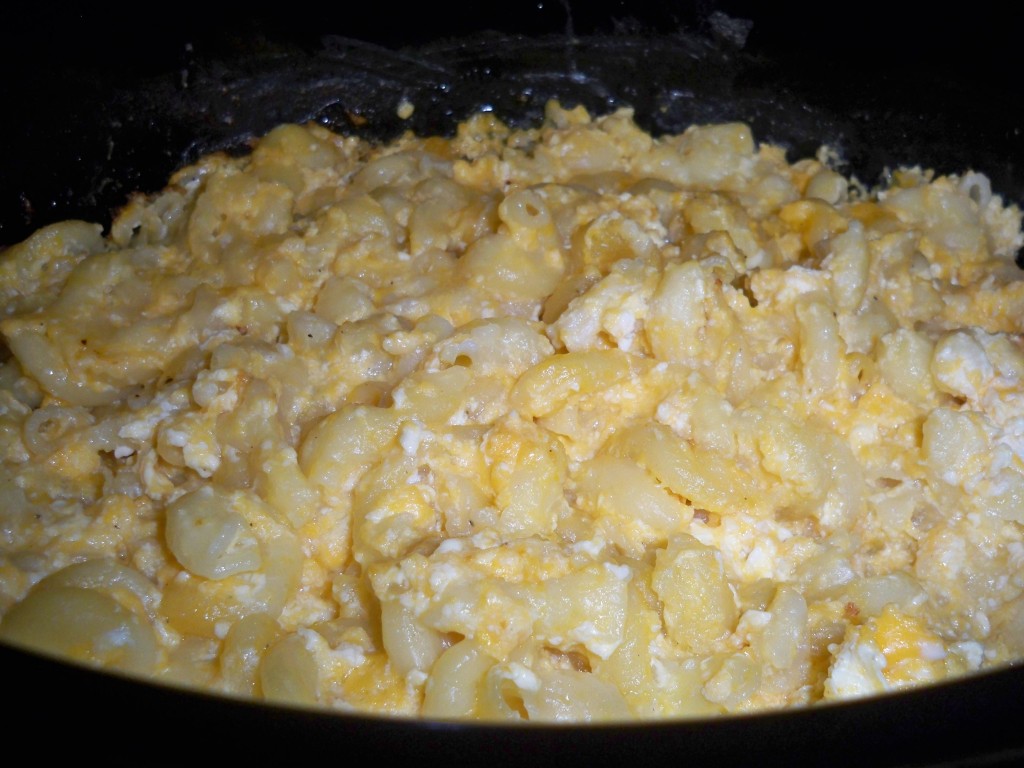
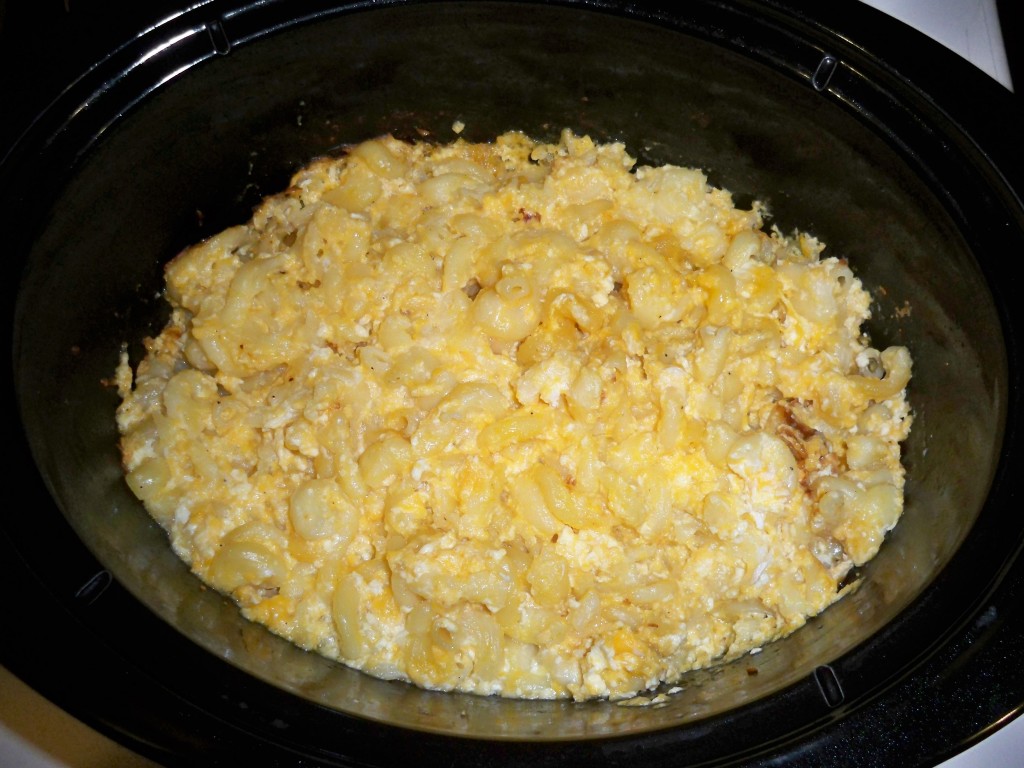
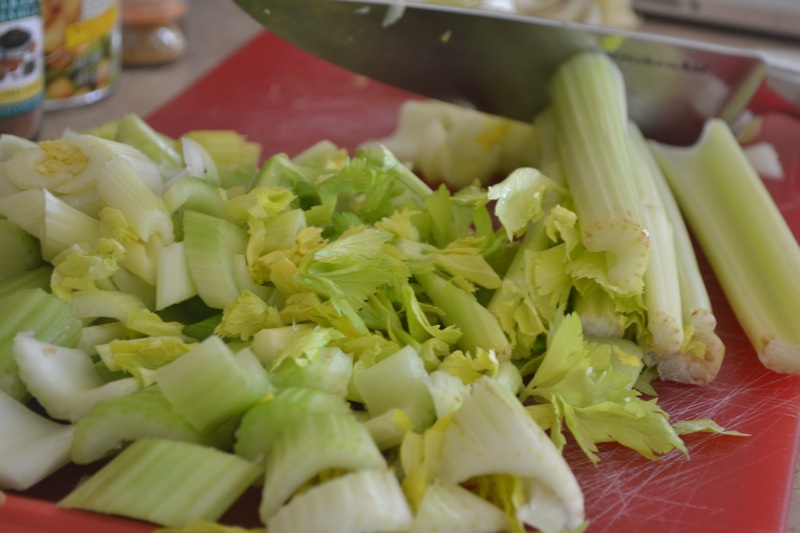 My recipe called for about 4 cups of chopped celery, which translated roughly to “all the celery you have in the house.” I also went with a rough chop and left the leaves on.
My recipe called for about 4 cups of chopped celery, which translated roughly to “all the celery you have in the house.” I also went with a rough chop and left the leaves on.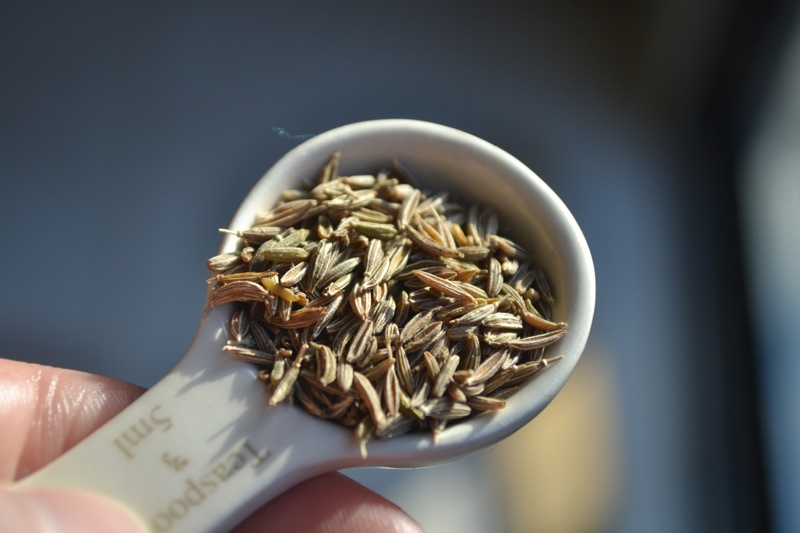 Then I took a teaspoon of cumin seeds and heated them in some olive oil.
Then I took a teaspoon of cumin seeds and heated them in some olive oil. It only took about 2 minutes for the cumin seeds to go from this….
It only took about 2 minutes for the cumin seeds to go from this….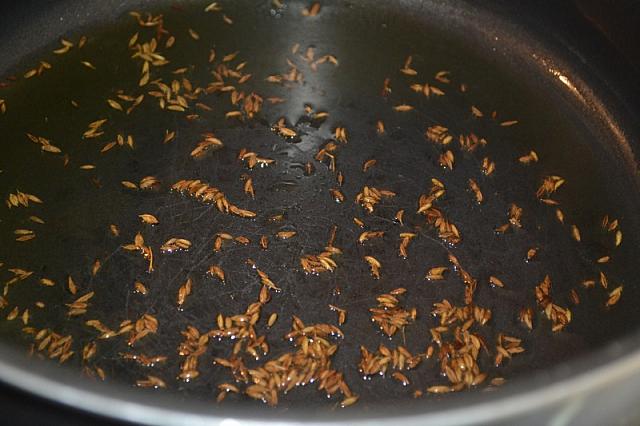 …to this browned delicious goodness!
…to this browned delicious goodness!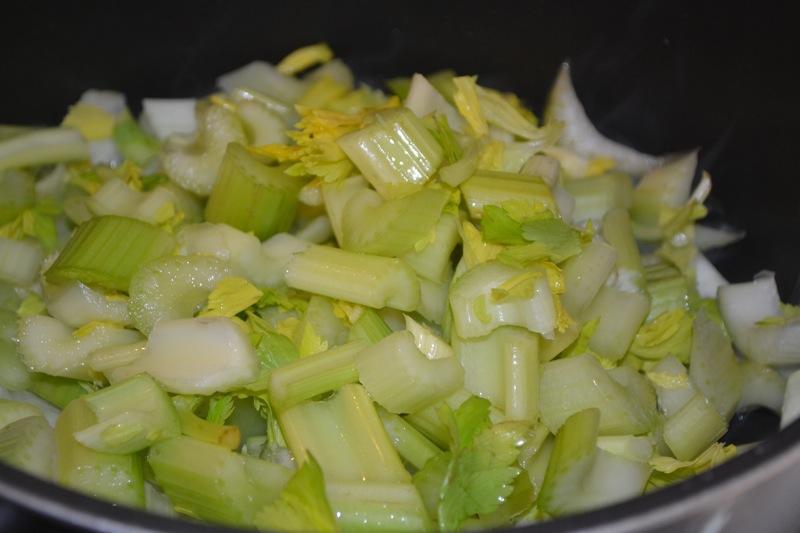 Then it was time to add my onions and celery and let them soften.
Then it was time to add my onions and celery and let them soften.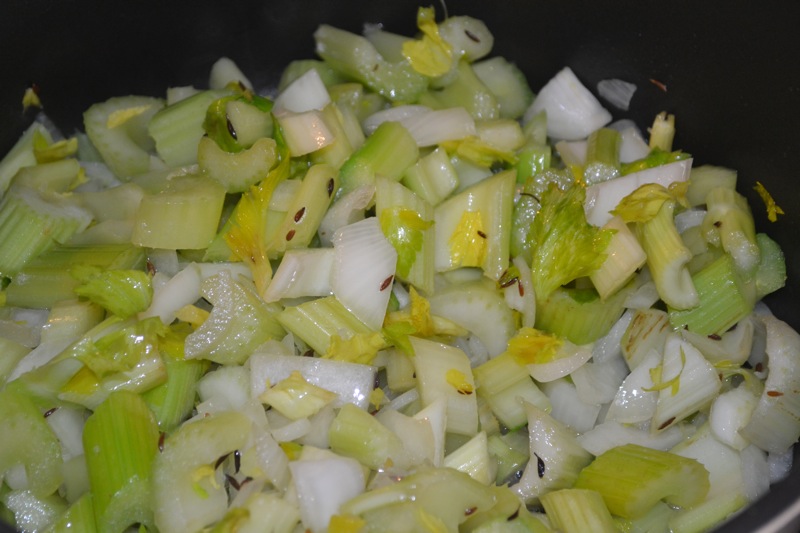 I really could have just eaten it exactly like this. Olive oil, cumin seed, onion and celery. YUM.
I really could have just eaten it exactly like this. Olive oil, cumin seed, onion and celery. YUM.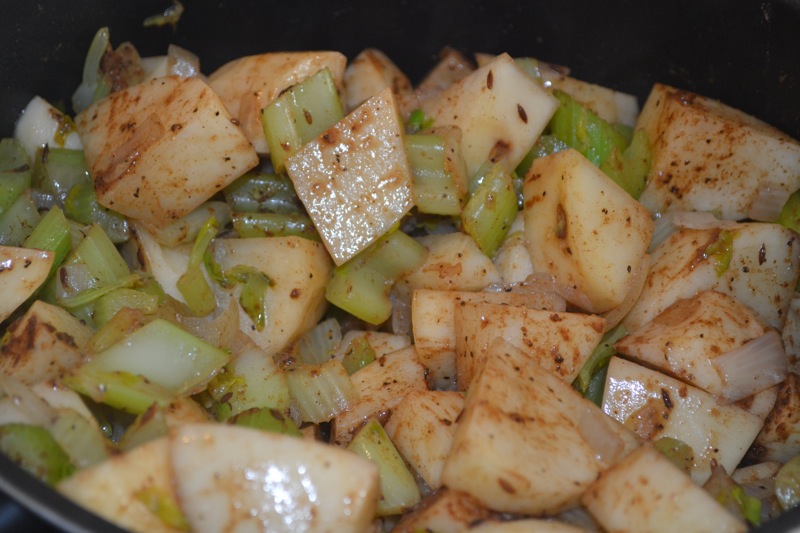 Next, the potatoes and garam masala.
Next, the potatoes and garam masala.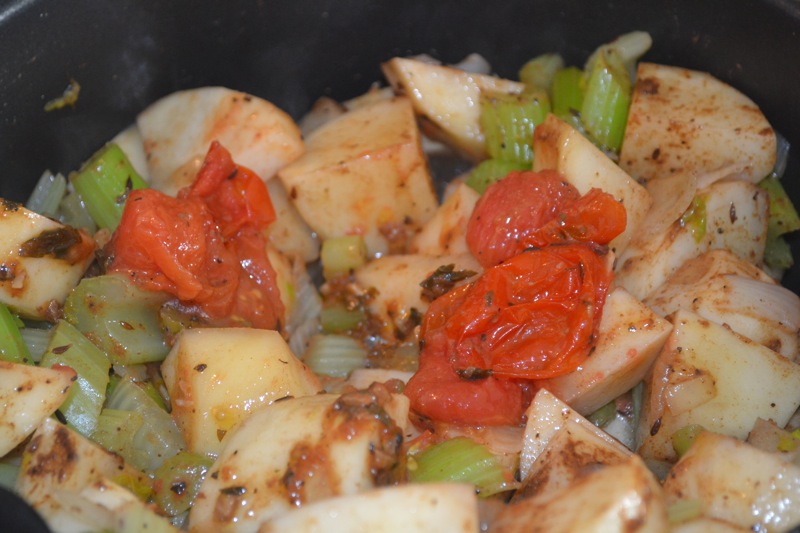 Now would be a good time to add some canned tomatoes, some chopped carrots, or some chick peas. I happened to have some stewed tomatoes leftover in the fridge, so I tossed them in. Stir these ingredients together and let them mingle for 2 or 3 minutes before the next step.
Now would be a good time to add some canned tomatoes, some chopped carrots, or some chick peas. I happened to have some stewed tomatoes leftover in the fridge, so I tossed them in. Stir these ingredients together and let them mingle for 2 or 3 minutes before the next step.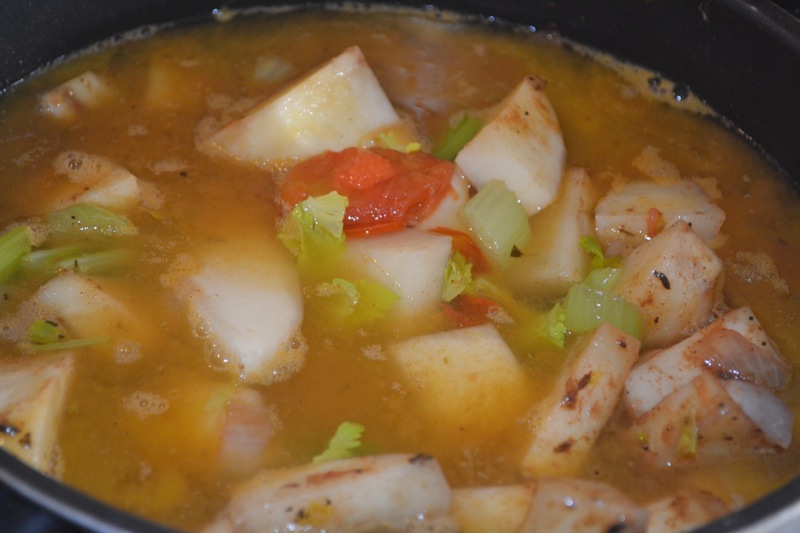 Add enough vegetable broth to cover everything and let simmer. That turned out to be around 3-1/2 cups. I had 2 cups of vegetable broth, so I made up the difference with a mixture of white wine and water. Let it simmer partially covered for 20 minutes until the potatoes are fork tender.
Add enough vegetable broth to cover everything and let simmer. That turned out to be around 3-1/2 cups. I had 2 cups of vegetable broth, so I made up the difference with a mixture of white wine and water. Let it simmer partially covered for 20 minutes until the potatoes are fork tender.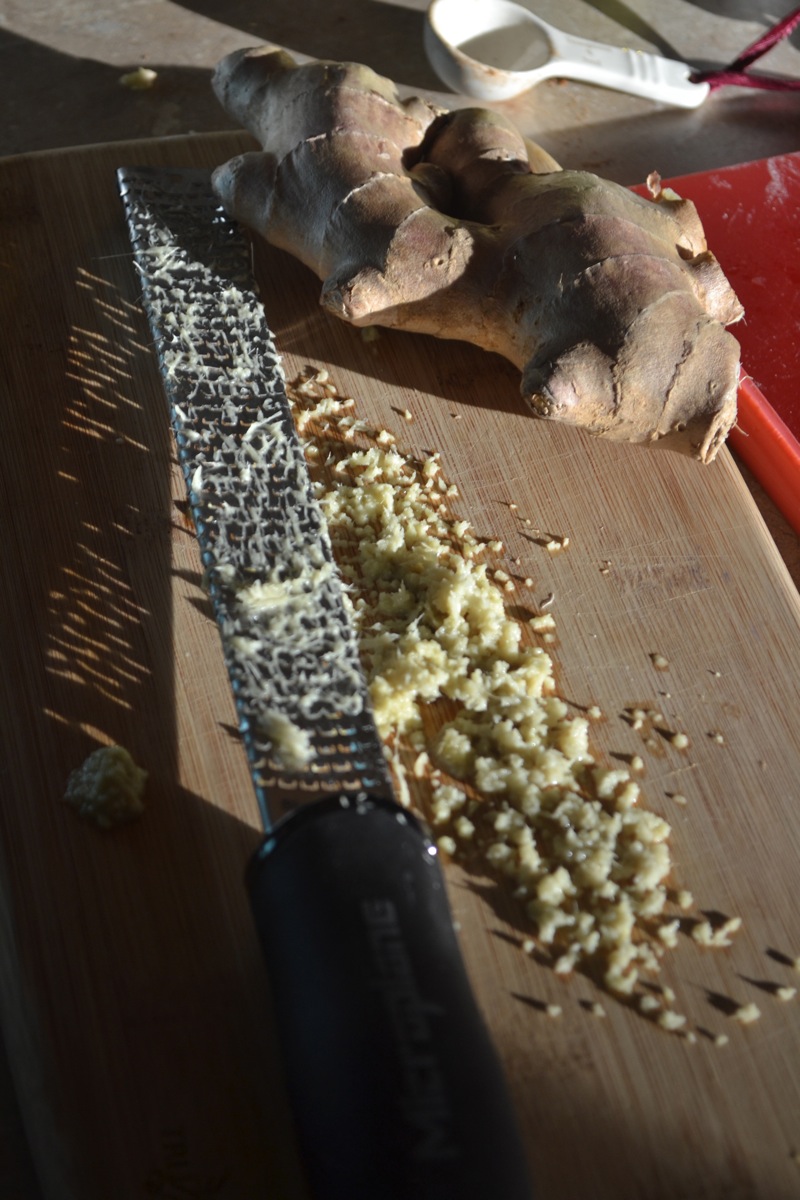 With about 5 or 10 minutes of cooking time left, add some fresh grated ginger if you have it, and a teaspoon of curry powder. Give the whole thing another 5-ish minutes to simmer uncovered and really reduce the liquid.
With about 5 or 10 minutes of cooking time left, add some fresh grated ginger if you have it, and a teaspoon of curry powder. Give the whole thing another 5-ish minutes to simmer uncovered and really reduce the liquid.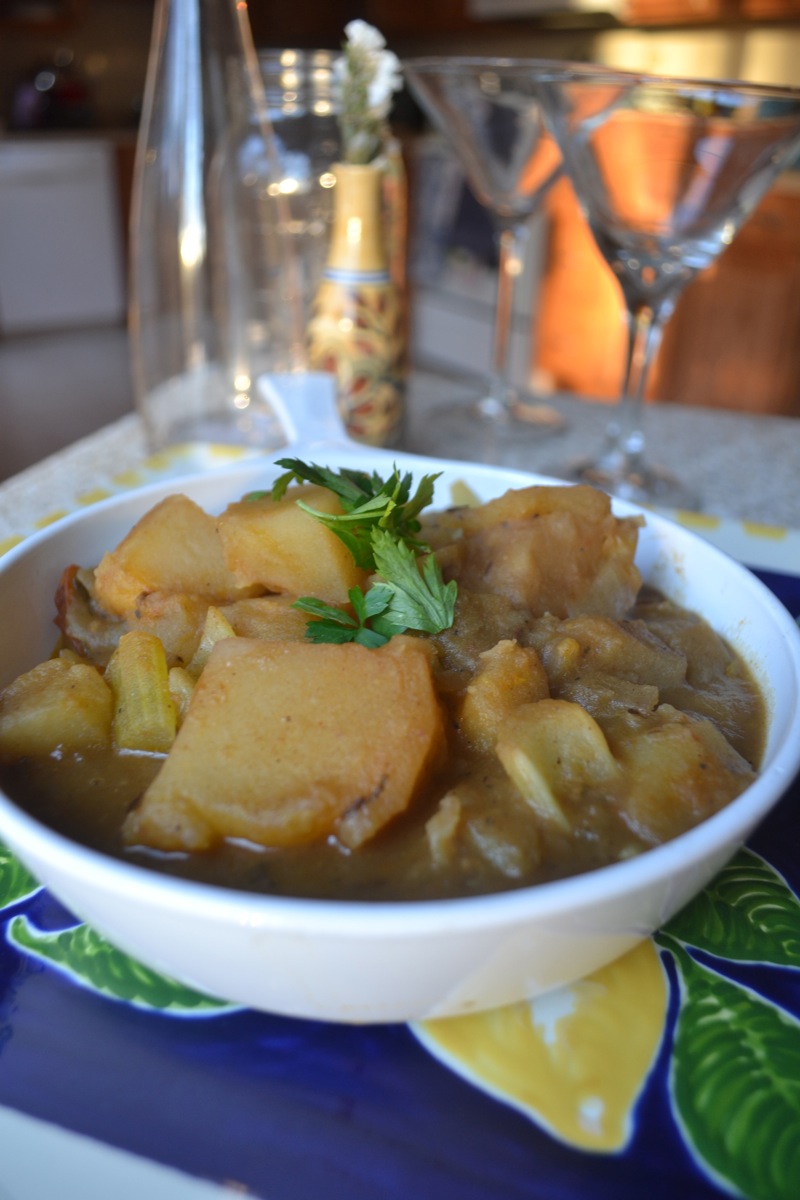 Garnish with cilantro! (Or flat leaf parsley if you’re like me and that’s all you have handy).
Garnish with cilantro! (Or flat leaf parsley if you’re like me and that’s all you have handy).
